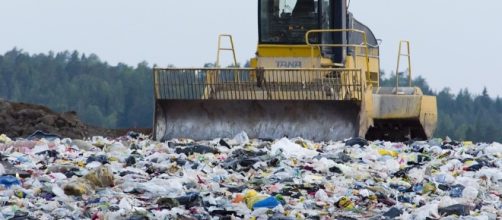“How should we dispose of our garbage?” That’s the question being asked by many US manufacturers following china’s decision to refuse American waste. Trading scrap products for viable items is a multi-billion dollar business, with waste being the sixth largest U.S. export to China. Beijing has long accepted different types of solid waste. Based mostly on environmental reasons, it decided to stop importing 24 varieties of said waste, telling the World Trade Organization (WTO) that this includes unsorted paper and various types of plastic
Environmental concerns
The US acknowledged China’s need to protect its environment, but criticized the short time frame it has been given to develop a Plan B.
Due to the trade deficit the US has with China, it decided to start sending its used plastic, rubber and metal, which China uses to make electronics, appliances and other things. Over the past few years, however, China found “large amounts of dirty and hazardous material mixed with solid waste, leading to serious environmental pollution”. Its State Council complained to the WTO that it could no longer accept such items from America and instead, planned to overhaul its own system of dealing with trash.
Over the past three decades, pollution levels have soared in China due to its vast industrialization, population growth, and urbanization. A University of California study, cited in Vision Times of June 2017, revealed that polluted air alone kills about 1.6 million people each year in China.
It explained that the victims usually suffered from stroke, heart and/or lung problems. China’s State Council said it needs to make a serious effort towards safeguarding its citizens’ health and protecting the environment. Banning US waste is just one step, but other factors need to be considered. These include China’s collection and disposal processes, energy policy for recycling, environmental requirements and its economic and technological feasibility.
Harsh reality hits home
With very little time to decide how it’s going to deal with several million tonnes of waste, the financial pinch is inevitable. The U.S. Institute of Scrap Recycling Industries (ISRI) complained that millions of dollars are already being lost because “Chinese buyers are canceling orders, or not placing new ones”.
In some cases, shipments of waste are remaining on the port, uncollected. Given the situation, the US has just a few options. It could recycle more of its garbage at home, but since a new recycling plant hasn’t been built in years, costly upgrades will be needed. It could also ship its paper and plastic to other large countries like India but transportation costs may increase.
The environment is not China’s only concern when it comes to American waste. According to Reuters, China has imported 7.3 million tonnes of waste plastics, valued at $3.7 billion in 2016. Large numbers of drugs, guns and other contraband products were found in such shipments. The intention to protect its country and 1.3 billion people is a noble one, but words without action will get China nowhere. As for the US, decisions must be taken quickly before hazardous landfills start popping up, creating danger for its own residents.


